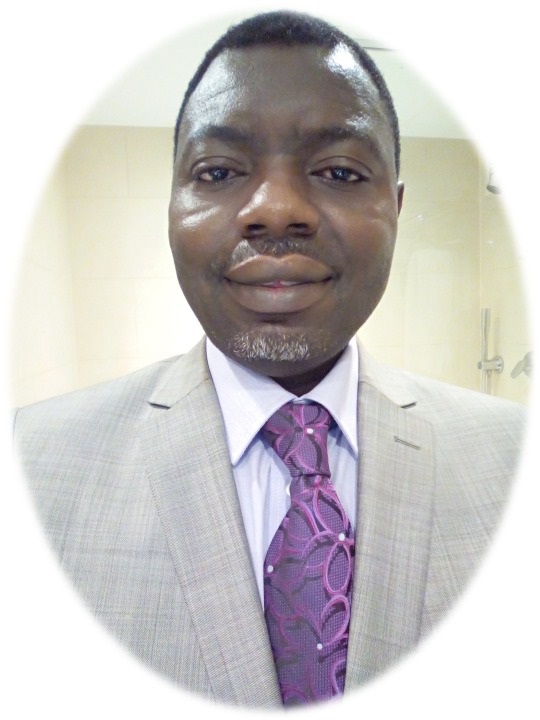IRM corps entier, étude princeps en Afrique subsaharienne à propos de 50 cas colligés à Abidjan (Côte d’Ivoire)
DOI:
https://doi.org/10.55715/jaim.v14i1.334Keywords:
Whole body -MRI -NeoplasiaAbstract
Objective: To describe the epidemiological, clinical and MRI characteristics of the patients
Methods: This was a prospective descriptive and analytical study that took place in Abidjan, Côte d'Ivoire, at the FARAH polyclinic over a period from February to June 2020.
We systematically sampled all patients who had undergone whole-body MRI (WBMRI). We included patients who came for diagnostic suspicion of a primary lesion or search for a secondary location of a known primary lesion and excluded patients for whom the examination report did not include the specific reason for examination. 50 patients were included in total. The most discriminating sequences were diffusion/ADC andT1 FAT SAT gadolinium injection.
Results: The mean age was 57 years with extremes of 04 and 81 years. The age range 55 to 65 years represented 34% of the population and male patients represented 54%, i.e. a sex ratio of 1.17. The probability of finding a cancerous lesion was 10.36 times higher in subjects over 50 years old (p<0.05).
The most frequent indications for whole-body MRI were breast cancer in 16 patients (32%) followed by prostate cancer in 10 patients (20%).
Whole-body MRI showed neoplastic lesions in 36 patients (72%) out of a total of 50 patients. As for the topography, the neoplastic lesions were predominantly located in the thoraco-cervical region in 58.33% of the cases, followed by the abdomino-pelvic region in 44.44%. These lesions were mainly mammary in 13 patients (36.11%), and prostatic in 9 patients (25%). A metastatic lesion was found in 12 patients (33.33%). Breast and prostate neoplastic lesions had the most varied secondary locations.
Conclusion: The diagnostic efficiency of whole-body MRI was 72%. The mean age of neoplasia occurrence was 57 years. The safety and performance of whole-body MRI make it an examination of choice in our practice context in the absence of scintigraphy and PET-scanner, which remain essential examinations in the diagnosis and extension assessment of neoplastic lesions.
RESUME
Objectif : Décrire les caractéristiques épidemio-cliniques et IRM des patients
Méthodes : il s’agissait d’une étude prospective à visée descriptive et analytique qui s’est déroulée à Abidjan en Côte d’Ivoire à la polyclinique FARAH sur une période de 6 mois (février à juin 2020).
Nous avons procédé à un échantillonnage systématique de tous les patients ayant effectué une IRM corps entier (IRM CE). Nous avons inclus les patients venus pour suspicion diagnostic de lésion primitive ou recherche de localisation secondaire d’une lésion primitive connue et exclu les patients pour qui le bulletin d’examen ne comportait pas le motif d’examen précis. 50 patients ont été inclus au total. Les séquences les plus discriminantes étaient la diffusion/ADC et l’injectionT1 FAT SAT gadolinium.
Résultats : L’âge moyen était de 57 ans avec des extrêmes de 04 ans et 81 ans. La tranche d’âge de 55 ans à 65 ans représentait 34% de l’effectif et les patients de sexe masculin en représentaient 54%, soit un sex-ratio de 1,17.
La probabilité d’observer une lésion cancéreuse était de 10,36 fois plus élevée chez le sujet de plus de 50 ans (p<0,05).
Les indications les plus fréquentes de l’IRM corps entier étaient le cancer du sein chez 16 patients (32%) suivie du cancer de la prostate chez 10 patients (20%) des cas.
L’IRM CE avait mis en évidence des lésions néoplasiques chez 36 patients (72%) sur un total de 50 patients. Pour la topographie, Les lésions néoplasiques prédominaient à l’étage thoraco-cervicale dans (58,33%) des cas suivis de la localisation abdomino-pelvienne (44,44%). Ces lésions étaient surtout mammaires chez 13 patients (36,11%), et prostatiques chez 9 patients (25%). Une lésion métastatique a été mise en évidence chez 12 patients (33,33%). Les lésions néoplasiques mammaires et prostatiques avaient les localisations secondaires les plus variées.
Conclusion : La rentabilité diagnostic de l’IRM corps entier était de 72%. L’âge moyen de survenu des néoplasies étaient de 57 ans. L’innocuité et les performances de l’IRM corps entier font d’elle un examen de choix dans notre contexte d’exercice en l’absence de la scintigraphie et TEP-scanner qui demeurent des examens essentiels dans le diagnostic et le bilan d’extension des lésions néoplasiques.
Downloads
References
2. Idy-Peretti I. Evolution de l'imagerie par résonance magnétique. IRBM 2009; 30: 53-9.
3. Effi AB, Koffi KE, Aman NA, Doukouré B, N'Dah KJ, Koffi KD, et al. Epidémiologie descriptive des cancers en Côte d'Ivoire. Bulletin du cancer 2013; 100(2): 119-25.
4. Dzik-Jurasz A, Domenig C, Geaorge M. Diffusion MRI for prediction of response of rectal cancer to chemoradiation. Lancet 2002; 360(9329): 307-8.
5. Halna JM, Grandadam M, Buemi A. Etude épidémiologique des cancers cutanés basée sur la population d'un département français de 1988 à 1996. Résuktats du régistre des cancers du Haut-Rhin. Les nouvelles dermatologiques 2000; 19: 48-55.
6. Parkin DM, Ferlay J, Hamdi-Cherif M. Cancer in Africa: Epidemiology and prevention Lyon: IARC Press; 2003.
7. Low RN, Gurney J. Diffusion-weighted MRI (DWI) in the oncology patient: value of breathhold DWI compared to unenhanced and gadolinium-enhanced MRI. J Magn Reson Imaging.2007; 25(4): 848-58.
8. Goldstraw P, Chansky K, Crowley J, Rami-Porta R, Asamura H, Eberhardt WE. The IASLC lung cancer staging project: proposals for reveision of the TNM stage groupings in the forthcoming (eighy) edition of the TNM classification for lung cancer. J Thorac Oncol.2016; 11: 39-51.
9. Colonna M, Danzon A, Delafosse P, Poncet F, Arveux P, Molinie F. Cancer prevalence in france: time trend, situation in 2002 and extrapolation to 2012. Eur J Cancer 2008; 44(1): 115-22.
10. Jacquet P, Sugarbaker P. Clinical research methodologies in diagnosis and staging of patients with peritoneal carcinomatosis. In Sugarbaker PH. Peritoneal carcinomatosis: principles of management. Boston : Kluwer Academic Publishers1996. p. 359-74.
11. Lemaitre L, Rouvière O, Penna-Renard R, Villers A, Puech P. L'IRM du cancer de la prostate : un changement de paradigme. J Radiol 2008; 89: 1053-64.
12. Jager GJ, Ruijeter ET, van de Kaa CA, de la Rosette JJ, Oosterhof GO, Thornbury JR. Local staging of prostate cancer with endorectal MR imaging: correlataion with histopathology. AJR Am J Roentgenol 1996; 166: 845-52.
13. Nougaret S, Addley HC, Colombo PE. Ovarian carcinomatosis: how the radiologist can help plan the surgical approach. Radiographics 2012; 32: 1775-800.
14. Fujii S, Matsusue E, Kanasaki Y. Detection of peritoneal dissemination in gynecological malignancy: evaluation by diffusion-wieghted MR imaging. Eur Radiol 2008; 18: 18-23.
15. Lauenstein T, Goehde SC, Herbon CU, Treder W, Ruehm SG, Debatin JF. Three dimensional volumetric interpolated breath hold MR imaging for whole body tumor staging in less than 15 minutes: a feasibility study. AJR 2002; 179: 445-9.
16. Venkitaraman R, Cook GJ, Deamley DP. Does magnetic resonance imaging of the spine have a role in the staging of prostate cancer? Clin Oncol 2009; 21: 39-42.
Downloads
Published
How to Cite
Issue
Section
License

This work is licensed under a Creative Commons Attribution-NonCommercial-ShareAlike 4.0 International License. Copyright @2017. This is an open-access article distributed under the terms of the Creative Commons Attribution-NonCommercial-ShareAlike 4.0 International License (http://creativecommons.org/licenses/by-nc-sa/4.0/) which permits unrestricted non-commercial used, distribution and reproduction in any medium






